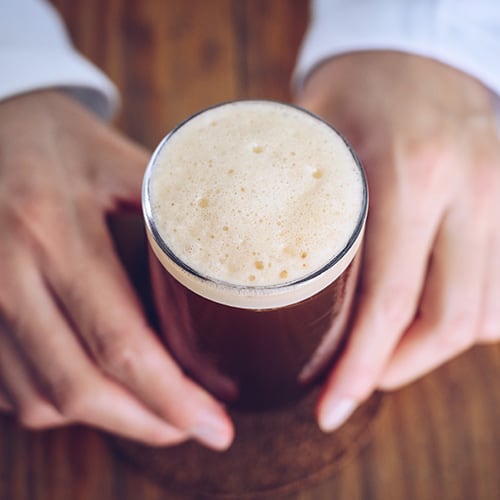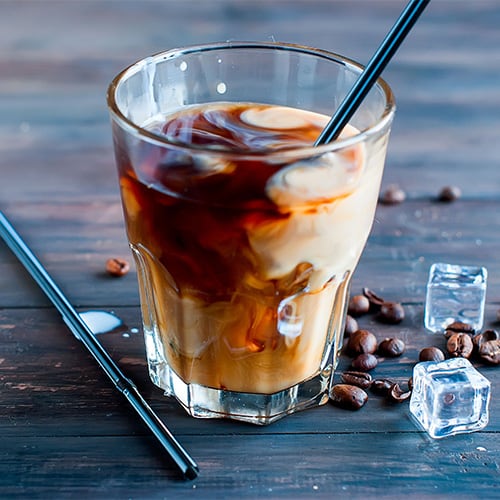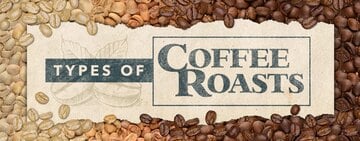Cold Brew vs Iced Coffee
Last updated on Jul 18, 2022Kevin SinghelDuring the hot summer months, cold brew and iced coffee skyrocket in popularity. Although both drinks are perfect to cool off on a hot summer day, many people don't know the difference between the two. From the way they're made to the way they taste, there are several stark differences between the two types of cold coffee. Understanding these differences is key to creating an effective menu, making it especially important if you're just starting your coffee shop. Below, we'll explore the differences between cold brew and iced coffee and learn the distinct features of each.
Shop All Coffee ProductsDifference between Cold Brew and Iced Coffee
The main difference between cold brew and iced coffee is their brewing method. You can make cold brew by steeping coffee in room temperature water for long periods, while iced coffee is made by using the standard brewing practice with hot water. Through these different brewing methods, big differences in flavor, texture, and caffeine levels emerge.
What Is Cold Brew?

Cold brew is a type of coffee that is brewed with cold or room temperature water and steeped for at least 12 hours. Cold brew is unique in the fact that it doesn’t have to be heated. Other coffees are made with heat to quickly extract their flavor and caffeine, while cold brew coffee has a much slower brewing process. Once brewed, cold brew coffee can stay refrigerated for several days, making it efficient and convenient to store large batches for later use.
Cold Brew Flavor
Cold brew coffee flavor is often described as being less acidic than other types of coffee. The flavor of cold brew is also a little sweeter and not as bitter as other types of coffee. Heat is what extracts most of the acidic bitter taste out of coffee beans, meaning it is absent in cold brew. Additionally, cold brew has a smoother texture than iced coffee, mostly due to its lower acidity levels.
What Is Nitro Cold Brew?
Nitro cold brew is cold brew coffee that has been infused with nitrogen gas through a pressurized valve. Much like regular cold brew coffee, nitro cold brew is known for its sweetness and low acidity. The added nitrogen creates a frothy layer at the top of the drink, similar to some beers. The smoothness of cold brew coffee combined with the silkiness of the top frothy layer creates an amazing taste and texture that is rapidly growing as a major coffee trend in the United States.
Cold Brew Grind Size
Since brewing cold brew requires grinds to sit in water for an extended period of time, coarsely ground beans are the best type of grind to use. Coarse grounds are only slightly ground, preventing over-extraction. If you use finer grinds, too much flavor can be extracted, resulting in an unpleasant and overpowering bitter taste.
Cold Brew Filters
If you want to make high-quality cold brew coffee, then you're going to need a cold brew filter. These filters strain out bitter acids and fatty oils during the steeping process, giving your coffee a smooth and balanced flavor. Once the steeping process is completed, these filters can quickly be discarded along with the filtered grounds, making clean-up fast and easy.
What Is Iced Coffee?
Iced coffee is any type of coffee that is brewed with heat and then served over ice. Iced and hot coffee are brewed the same way, so iced coffee is an easy addition to your menu. This type of coffee can also be swiftly made since the flavors of the beans are extracted quickly with heat rather than slowly over time.
Iced Coffee Flavor
The flavor of iced coffee is similar to that of hot coffee, although it tends to be less potent. When hot coffee is poured over ice cubes, the ice will melt and dilute the flavor of the coffee. To circumvent this problem, you can double the number of coffee beans used, keeping your iced coffee strong even after dilution.
How to Make Iced Coffee

Iced coffee is made by brewing coffee with heat and then pouring it over ice. Hot coffee being poured over ice can dilute the coffee as the ice melts, but there are several ways you can combat this. Rather than using regular ice cubes, you can fill your ice cube tray with coffee, and use coffee ice cubes instead. Coffee ice cubes will cool down your drink, without diluting its flavor with water. You can also chill your hot coffee in the freezer before pouring it over ice, allowing your drink to stay colder and not become watered down.
Caffeine in Cold Brew vs Iced Coffee
On average, cold brew coffees tend to have higher caffeine levels than iced coffees. The difference in caffeine levels comes from the way the drinks are brewed, as the brewing process for cold brew results in more concentrated coffee. On the other hand, iced coffee is often diluted and not as strong. If you're looking for a big caffeine boost to get you through the morning, cold brew coffee is your best bet.
Types of Cold Coffee

There are many different types of coffee, each with its own characteristics. Understanding these different types is key to providing quality service and allows you to serve coffee drinkers with varying tastes. Here are some of the most common types of cold coffees customers will look to order:
- Frappe - A Greek iced coffee drink made with instant coffee, water, sugar, and milk.
- Iced Latte - An iced drink with espresso, milk, and sweetener.
- Iced Macchiato - An iced drink made with cold milk over ice and topped with two shots of espresso
Cold brew and iced coffee share the distinction of being cold coffee beverages, but most of the similarities stop there. Both have distinct flavors and textures, making them both unique additions to any restaurant or coffee shop. Understanding the difference between the two allows you to utilize both types of drinks in your beverage menu. With this, you can diversify your menu and ensure that customers have plenty of coffee drink options to choose from.



